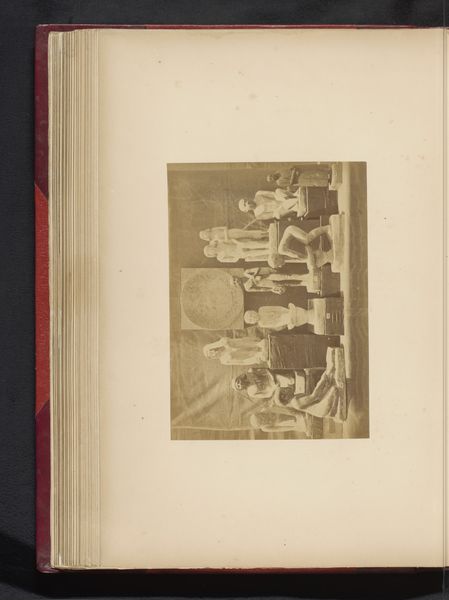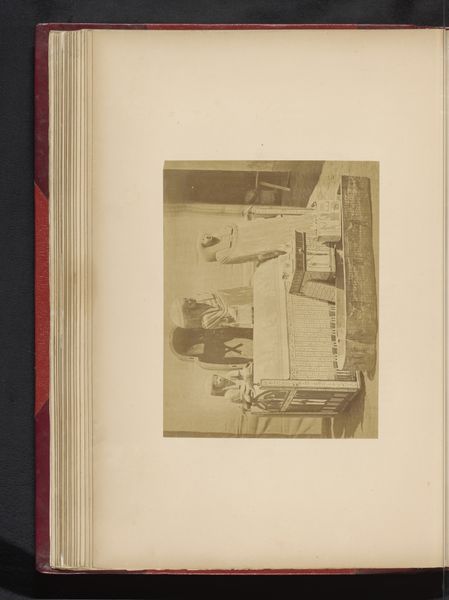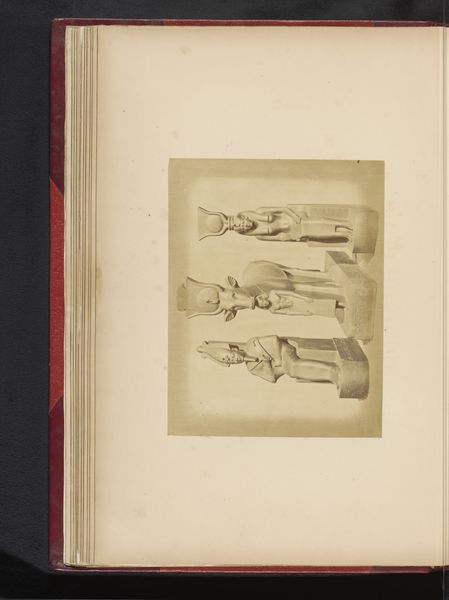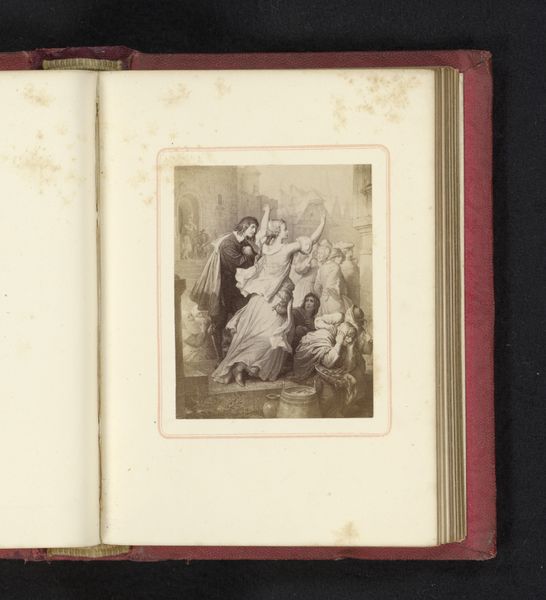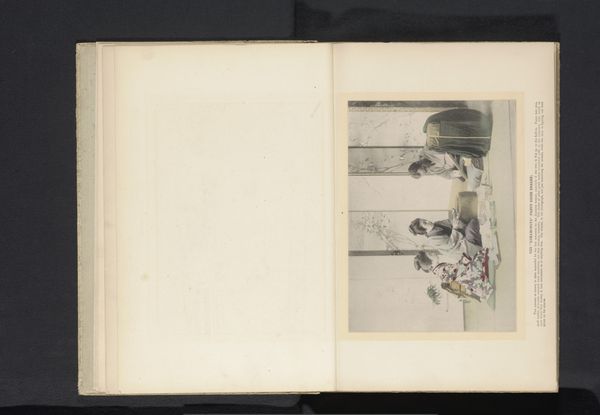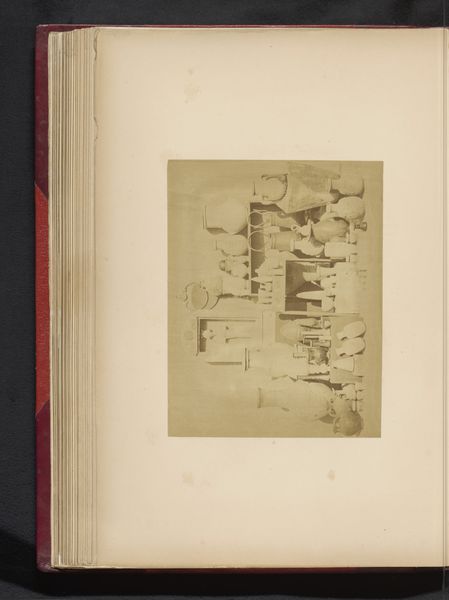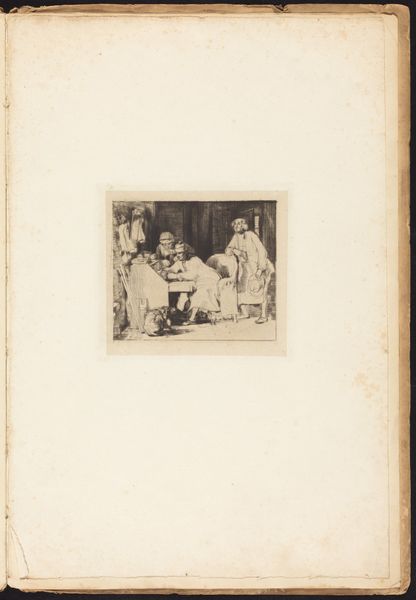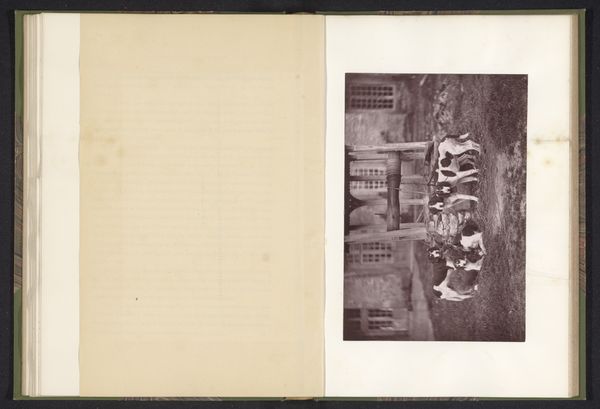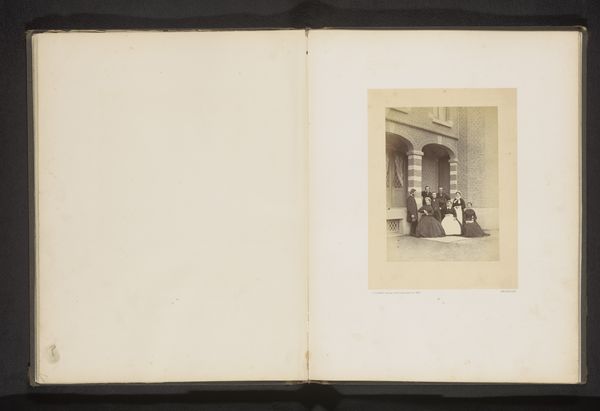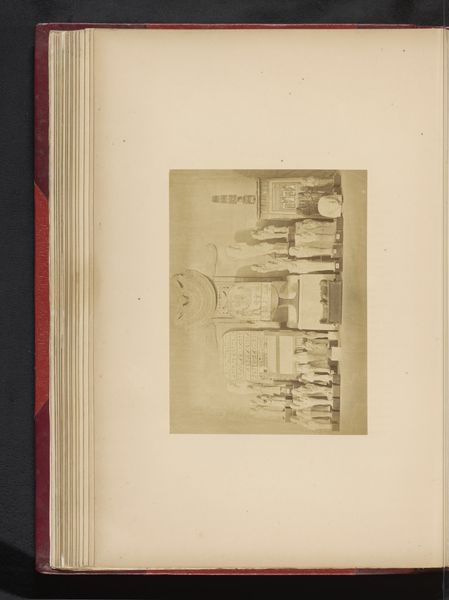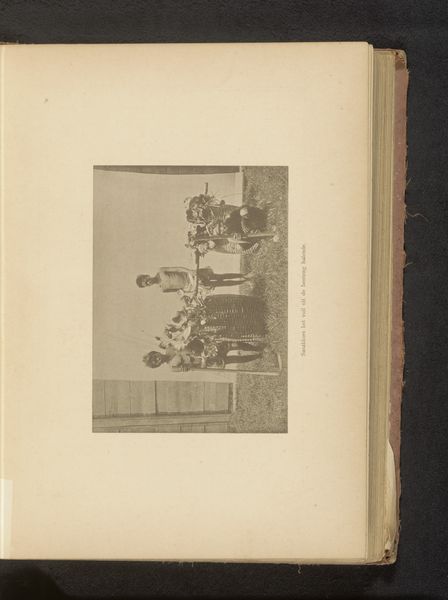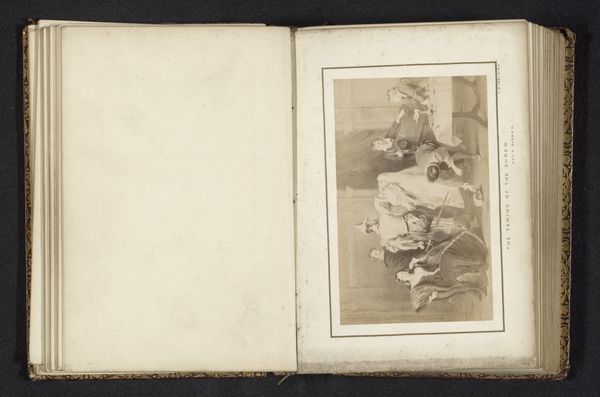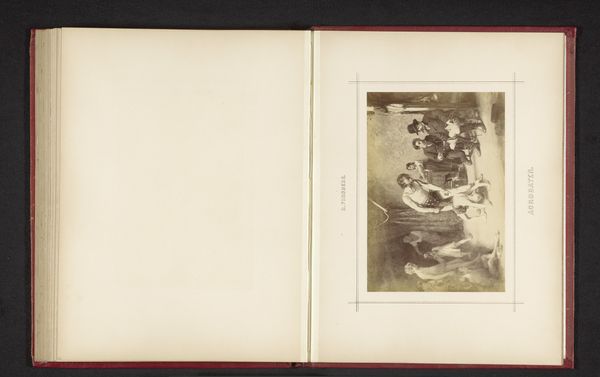
Beelden uit diverse tijdperken en stijlen in het Boulaq Museum in Caïro, Egypte before 1871
0:00
0:00
photography
#
landscape
#
ancient-egyptian-art
#
photography
#
ancient-mediterranean
Dimensions: height 232 mm, width 174 mm
Copyright: Rijks Museum: Open Domain
Editor: This photograph, taken before 1871 by Hippolyte Délié, showcases "Images from Various Eras and Styles in the Boulaq Museum in Cairo, Egypt." The sepia tone lends a hazy, almost dreamlike quality to these ancient artifacts. What do you see in this piece that speaks to you? Curator: This photograph captures more than just ancient artifacts; it documents a specific moment in the colonial gaze upon Egypt. It asks us to consider who had the power to represent and interpret this history. Notice how the artifacts are arranged, almost staged, within the museum setting. Editor: Yes, the arrangement does seem deliberate. It’s not simply a record; it's a constructed narrative. What narrative do you think Délié was trying to convey? Curator: Perhaps one of order, control, and the ability to classify and contain a culture deemed "other." Photography at this time served as a tool for Western powers to document and, in a way, possess the histories of colonized nations. This image may reflect the museum's own project of categorizing and exhibiting Egyptian heritage to a Western audience. Consider how the light falls and isolates these objects as subjects of European scientific inquiry and desire. What's highlighted, and what is left in shadow? Editor: I didn't think about it that way! So the way the photo is composed suggests a Western interpretation rather than a purely objective view of Egyptian art? Curator: Precisely. Recognizing that photographs are never neutral records but rather loaded representations changes how we relate to them, as sources and records. How does thinking about the legacy of colonialism shape how you view this image? Editor: It adds layers of complexity. I realize how important it is to question the photographer's perspective. This photo is not just about art; it’s about power and interpretation. Curator: Exactly, and that awareness enables a richer understanding.
Comments
No comments
Be the first to comment and join the conversation on the ultimate creative platform.
